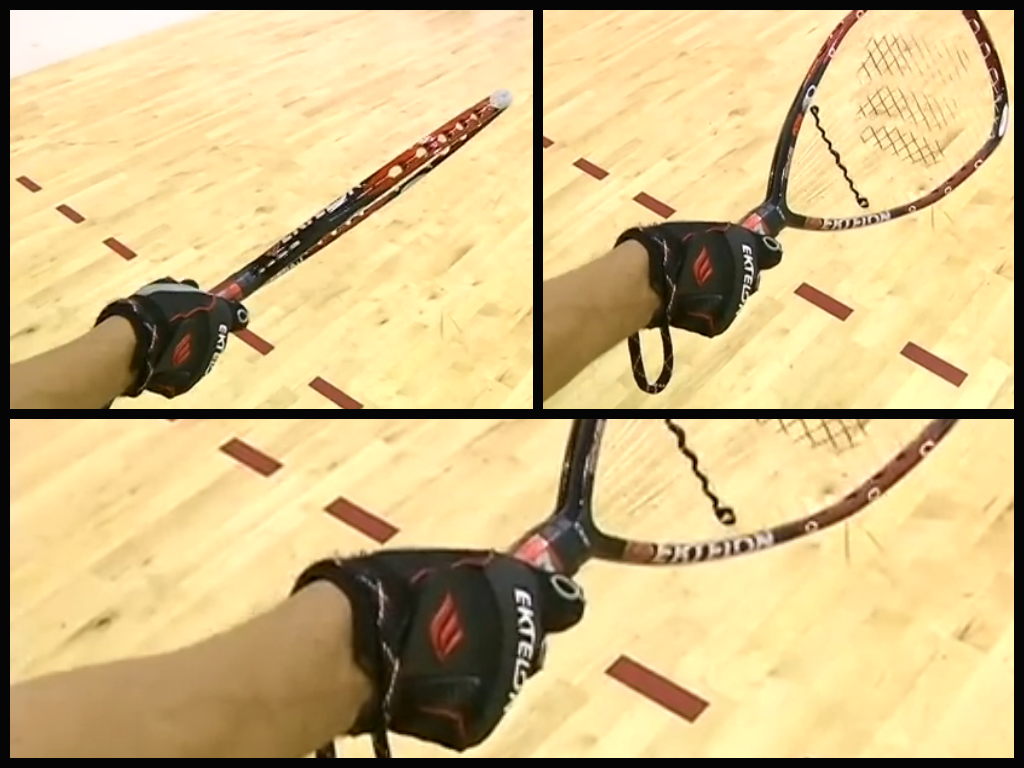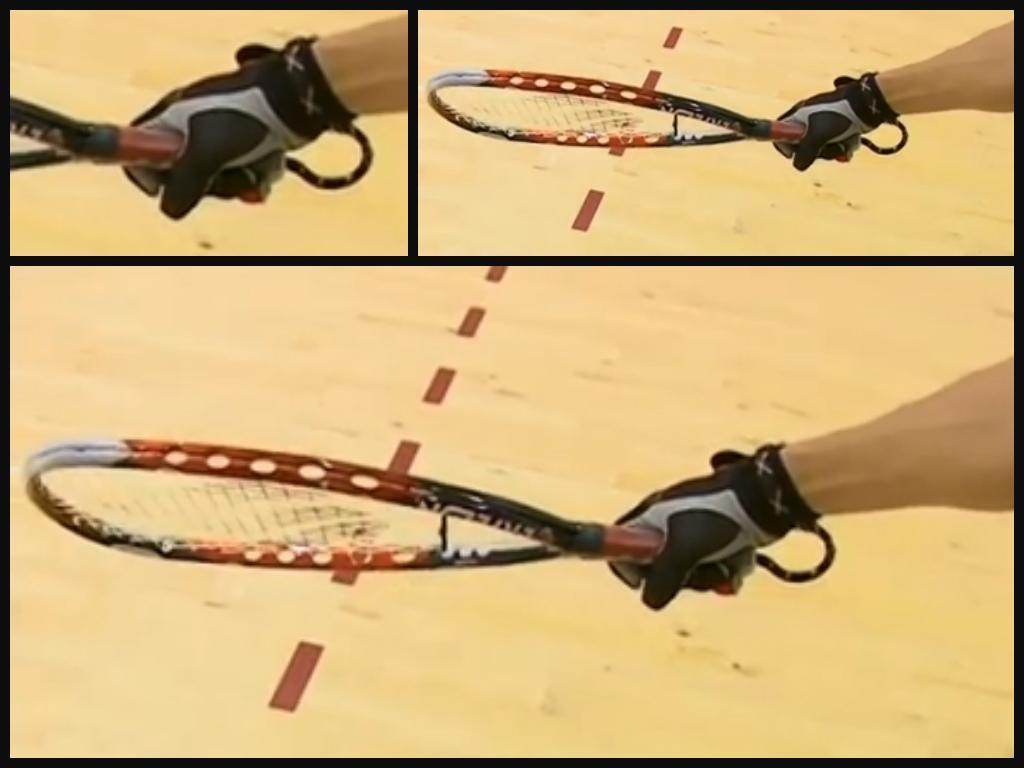Main Body
2. Fundamentals, Skills & Techniques
There are many fundamentals, skills, and strategies you must understand in order to succeed in racquetball. Ideally, fundamentals will help you to perform the motor movements with some level of automaticity, while adopting your playing strategy/style to the rules.
Read through each of the topics below to better understand the helpful fundamentals of racquetball.
Grips
A racquetball grip is a little different from a traditional racket grip because the racket is shorter than other rackets (no more than 22″).
To perform the correct grip, keep in mind the following TIPS:
- Hold out your hand as if to shake someone’s hand. The racket should be placed in the “V” between your thumb and forefinger.
- Do not grip the racket too firmly. There should be some leeway as the racket should move in your hand from forehand to backhand.
- Your pinky finger is below the end of the racket grip. Though it feels odd at first, this will give your racket a little additional length.
Click for a description of the forehand and backhand grips presented by Expert Village.
Below are illustrations of the forehand and backhand grips:


Serving
To perform a racquetball serve:
- The server must stand in between the two service lines in the middle of the court
- While a foot may touch the back line, it may not completely cross it and no part of the body can touch the front line
- The ball must bounce before being struck by the server
- The ball must hit the front wall prior to hitting any other wall
- The ball may not touch the ceiling on the serve
- A ball may not hit off the back wall before it has touched the ground or a fault will be declared
- The ball may only hit one other side wall after hitting the front wall on a serve
- If it were to hit more than one side of the wall, a fault would be declared.
- A fault will also be declared if the ball does not clear the second service line on the fly.
There are typically 3 types of serves in racquetball:
- Drive Serve – The drive serve is meant to be hit as low and as hard as possible. It can be hit to any part of the court. Ideally, this serve will be away from the receiver and low so as to be difficult to return. Click the link: How to Hit a Drive Serve
- Lob Serve – The lob serve is a high arching and somewhat slow serve. This serve is meant to land in the deep corners of the service areas so as to be difficult to return. Click the link: How to Hit a Lob Serve
- Z Serve – The Z serve utilizes one side wall and reverses the side of the court that the ball is initially hit into. The object is to land the serve in the deep opposite corner of its initial path, usually to a receiver’s backhand. Please click the link below for a tutorial on how to perform each serve. Click the link: How to Hit a Z Serve
Forehand
The forehand, like tennis or squash, is hit from a player’s dominant side.
- Racquet angle: Be sure to pay close attention to the grip that is used when performing a forehand shot (see Figure 2A above). The racket should be kept as level as possible.
- If the angle of the racket is faced toward the ceiling, the ball will be hit too high.
- If the angle of the racket is faced toward the ground, the ball will hit the floor.
- Shot Height: A controlled player can easily hit a target with a practiced forehand. Ideally, their shots are powerful and as low as possible, thus giving their opponent very little time to react. A general guideline for keeping shots low is to wait for the ball to fall below knee height before striking it.
- Body positioning: Right handed players should make sure that their toes and chest are facing the right side wall. Left handed players should make sure that their toes and chest are facing the left side wall.
Watch a tutorial on how to perform a forehand shot presented by PacificSports
Backhand
Similarly to the forehand, grip is very important to the backhand stroke. It will be hit across your body so that the racket is on your non-dominant side. As with the forehand, the angle is very important. It is typically more difficult to control the backhand.
- Racquet angle: Be sure to pay close attention to the grip that is used when performing a backhand shot (see Figure 2B above). The racket should be kept as level as possible.
- If the angle of the racket is faced toward the ceiling, the ball will be hit too high.
- If the angle of the racket is faced toward the ground, the ball will hit the floor.
- Shot Height: A controlled player can easily hit a target with a practiced backhand. Ideally, their shots are powerful and as low as possible, thus giving their opponent very little time to react. A general guideline for keeping shots low is to wait for the ball to fall below knee height before striking it.
- Body positioning: When attempting a backhand shot, the position of a player’s feet, chest and shoulders will be opposite of the forehand position.
- Right-handed players should make sure that their toes and chest are facing the left side wall; the right shoulder should be facing the front wall.
- Left-handed players should make sure that their toes and chest are facing the right side wall; the left shoulder should be facing the front wall.
Watch a tutorial on how to perform a backhand shot presented by PacificSports
Positioning
Court position is a critical aspect of racquetball. The best position to be in is between the 2nd service line and the dotted receiving line in the middle of the court. This gives the player access to all shots hit by his or her opponent. If position in the middle of the court is established, it is a great advantage.
During doubles play, it is best if players communicate as to who will be front and who will be back.
- Front person: reach any shot possible
- Back person: get shots that the front person is unable to reach.
Communication is vital in this situation.
Shot Selection
The goal of racquetball is to hit a shot that your opponent cannot reach. Though many associate racquetball with a game of power, well placed shots are more important than the velocity at which the ball is struck. Variety is a key. Do not let your opponent get comfortable. Change the trajectory of your shot as well as the speed of it often in order to keep your opponent on their toes.
NOTE: Shot selection should be selected based on the court position of your opponent.

